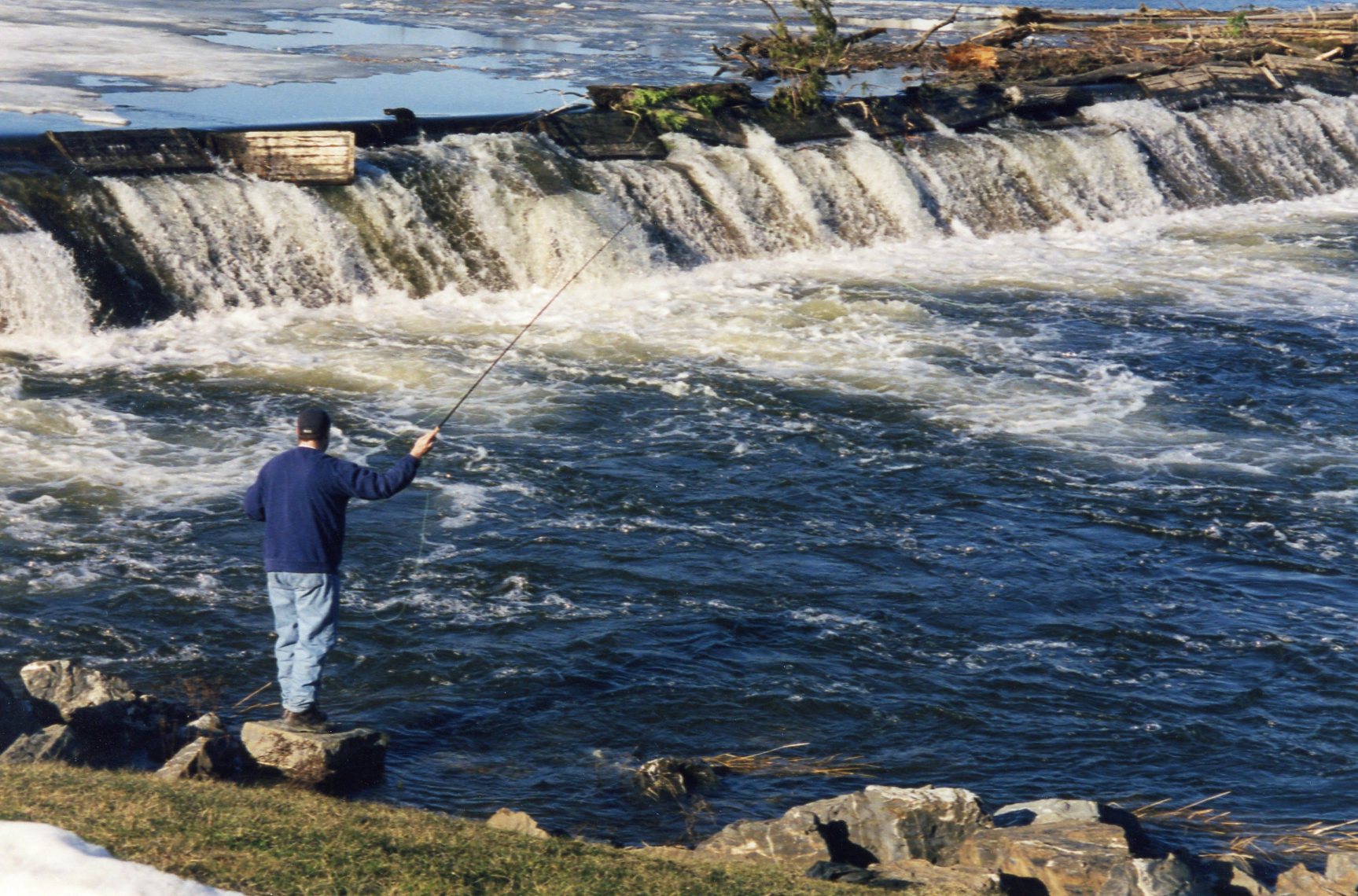
Any veteran Crown of Maine spring fisherman knows that April casting forays are more for the spirit and the soul than the fight and the frying pan. Cold water action is generally slow and conditions challenging, but after months of cabin fever any open water exposure offers rejuvenation. And an occasional trout or salmon will eventually cooperate, so let me offer some advice on how to tempt frigid fish to bite a bait.
My first preparation is to rig two rods. I’m a devout fly fisherman but realize worms work best this month, so a medium weight, 7-foot spinning rod accompanies my 9-foot, 6-weight fly rod. In my fishing vest is also a small plastic lure box with six or eight small, colorful lures that can also be used with the spinning outfit. My proven favorites include an Al’s goldfish, red and white Dardevle, silver Super Duper, Mepp’s spinner with orange beads and a little Cleo.
I carry two fly reels, one with a sinking tip line and the other a floating line, and my fly box features a full selection of streamer flies, wet flies and nymphs of various sizes, colors, and weights. To ensure any success at all with flies, it’s essential to match the line and fly to the current and depth of a pool to allow the feathered imitation to swim deep and slow right along the bottom.

Roger Shaw of Mars Hill uses a bronze Sutton Spoon dished deep and slow to tease trout to strike when April streams are still high, cold and dingy. (Courtesy of Bill Graves)
Regardless if you’re casting flies or bottom-bouncing bait, the water’s cold. Fish are set up in feeding lanes using current to bring food to them. They are not going to chase baits as they do in the summer, so it’s crucial to put your fly, lure or worm right near their nose to ensure a strike. It may take a dozen seemingly identical casts with a streamer to entice a strike, but just the right speed, depth and swing arc in the current are a must.
Flies must ride just above the bottom structure, or if it’s a weighted nymph pattern it can bump off the bottom occasionally as if it’s hopping along. Cast into backwaters, bogans and eddies where water flow is light and slow and likely to be warmer than the deeper, faster runs of the main waterway. Remember, the offering needs to swing near their feeding run — they won’t chase — and it may take a lot of casts to coax spring trout to strike. Pools below island and shoreline runs just above creeks inletting into larger streams usually hold fish this month, don’t waste casts on fast runs and sets of rips this early in the season.
Selecting a fly pattern can be tricky this time of year. Worms have an enticing smell to go with their natural look, but artificial baits depend solely on appearance to draw strikes. When streams are still murky, off-color and have debris floating everywhere, I usually opt for a brightly-colored attractor pattern to catch a trout’s eye. A Mickey Finn, red and white bucktail or Ouananiche Sunset really work well for streamer patterns on a size 8 or 10, 2X or 3X long shank hook. For wet flies I’d suggest size 10 or 12 hooks dressed as a Parmachene Belle, Silver doctor, hare’s ear, March brown or a light Cahill. As water clears I turn to baitfish imitations like a blacknose dace, magog smelt, or black and white bucktail. About every 30 to 40 casts I change to a nymph and work the same pool again. A weighted leech, wooly bugger matuka pattern in black or olive are proven trout takers.

Tom Tardiff of Robinson visits pools on the Prestile and some local small ponds in mid-April to hook a few early season trout. (Courtesy of Bill Graves)
While the popular method of using a worm with a light sinker 6 to 8 inches above the bait and alternately lifting and lowering the rod tip to bounce the bait along bottom works, I like a spinner. A small-bladed silver or ivory spinner helps keep the worm near bottom and adds enough flash to draw a trout’s eye to the approaching food, and then it’s up to the live bait and its aroma. As with flies, deep and slow movements are the keys to a modicum of success. Be sure to use non-toxic sinkers, lead weights are illegal, and round crimp-on splitshot styles get caught and hung up on bottom structure less often than torpedo shapes.
If you can find an eddy, deadwater below an island or a bogan where river water has formed a small pool along the main flowage, try a bait and bobber rig. I’ve had great luck in coves along the Prestile, Aroostook and Meduxnekeag with bait-and-wait tactics. Trout avoid the faster flow of cold water and seek out coves and eddies to cruise in search of food, away from the main streams’ heavy flow. Sooner or later a fish will find your worm if you toss out a couple of bobber rigs and just lean the rod on a crotched stick and relax.
April fishing is a fairly sedentary sport done while standing in snow, mud or very chilly water, so dress for warmth and comfort. I prefer long underwear, wool pants, two layers of socks and neoprene hip boots or chest waders. A wool hat, gloves and a couple of chemical handwarmers fight any cold breeze blowing off the water and adjacent snow banks. I carry a five-gallon bucket with a removable padded top for lugging extra gear and a comfortable seat.
Fishing Aroostook waterways is far from optimal this month, but it improves as each day passes, and being out and about quickly overcomes the winter blahs.







